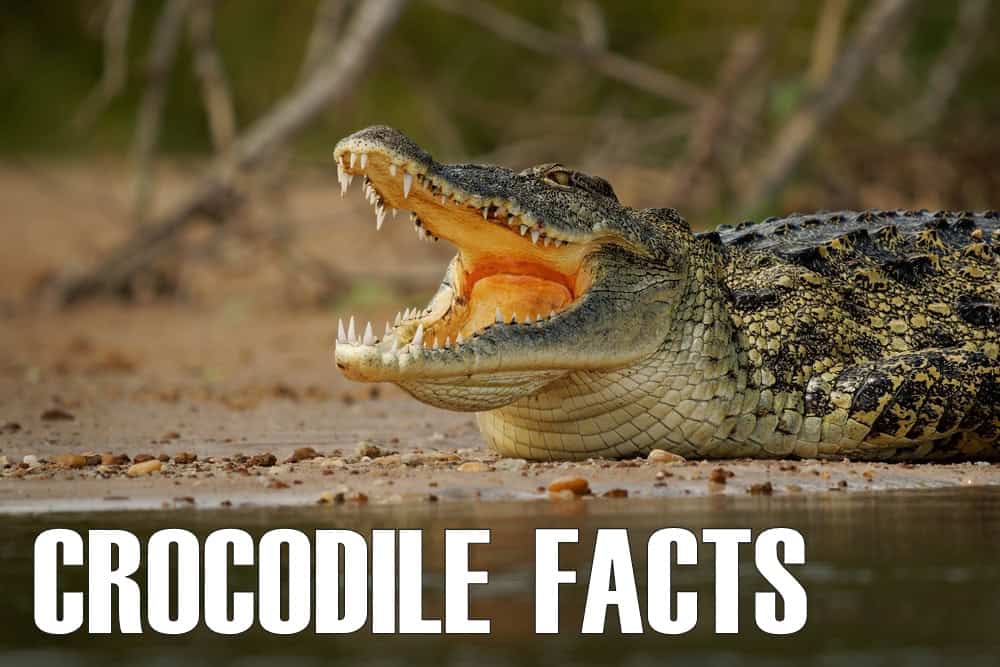
Crocodiles are some of the most dangerous animals found in freshwater and saltwater environments around the world. Their presence is particularly strong in the tropics, from the vast Nile River in Africa to the mangrove swamps of Australia.
1. They Have an Ancient Lineage
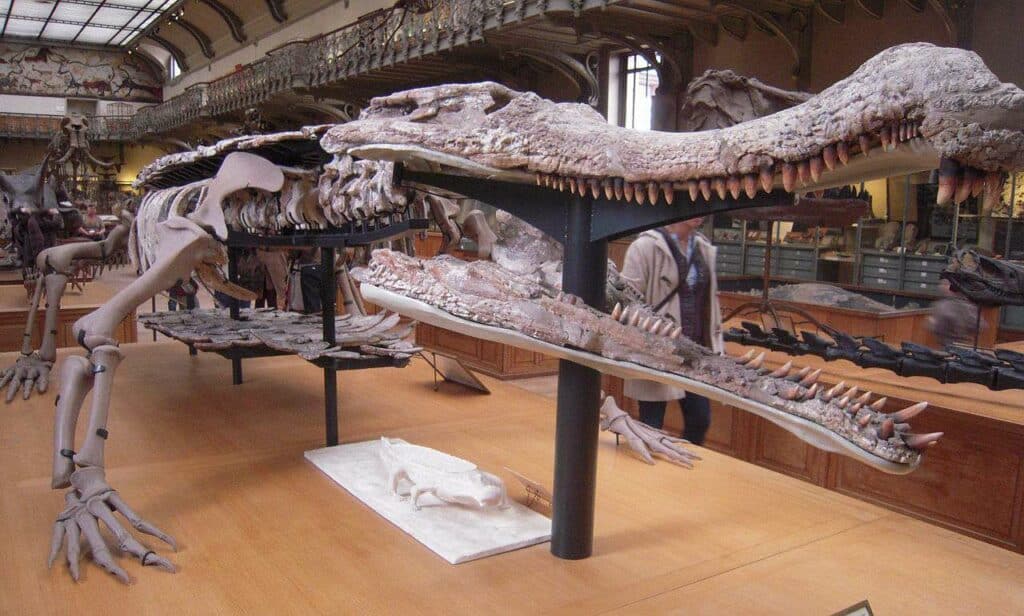
Crocodiles are among the oldest living reptiles, with ancestors dating back over 200 million years. They have survived past mass extinctions, making them living relics of the dinosaur age. They belong to the order Crocodylia, which includes alligators, caimans, and gharials.
Fossil records show a diverse history with many species displaying a variety of sizes and adaptations. For instance, the Deinosuchus, a prehistoric crocodile from North America, could grow up to 35 feet long and likely fed on dinosaurs. Another notable extinct relative is the Sarcosuchus, also known as the “SuperCroc,” which lived about 112 million years ago and reached lengths of up to 40 feet.
Modern crocodiles have retained many of the physical traits of their ancestors, such as the bony scutes on their back, sharp teeth, and strong jaws, all of which have been integral to their survival over millions of years.
2. Crocodiles Are Found Across Several Continents
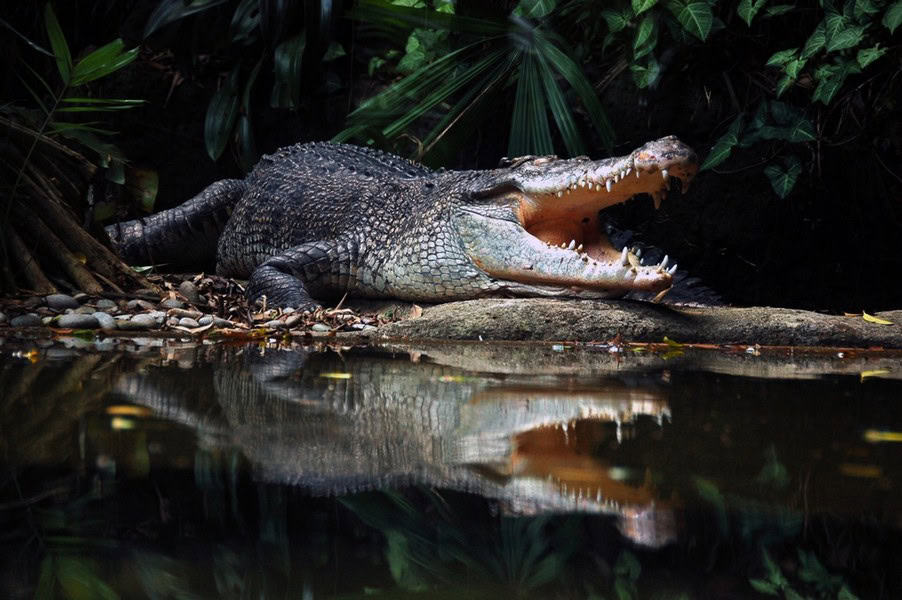
There are about 23 recognized species of crocodiles distributed across 13 genera. These species are found in various regions worldwide, including Africa, Asia, the Americas, and Australia. Some well-known species include the Nile crocodile, saltwater crocodile, and the American crocodile. These species illustrate the crocodile’s ability to dominate both freshwater and saline environments. Nile crocodiles are found throughout Tanzania, in almost all its national parks and game reserves.
3. Their Name is Rooted in Ancient Greek
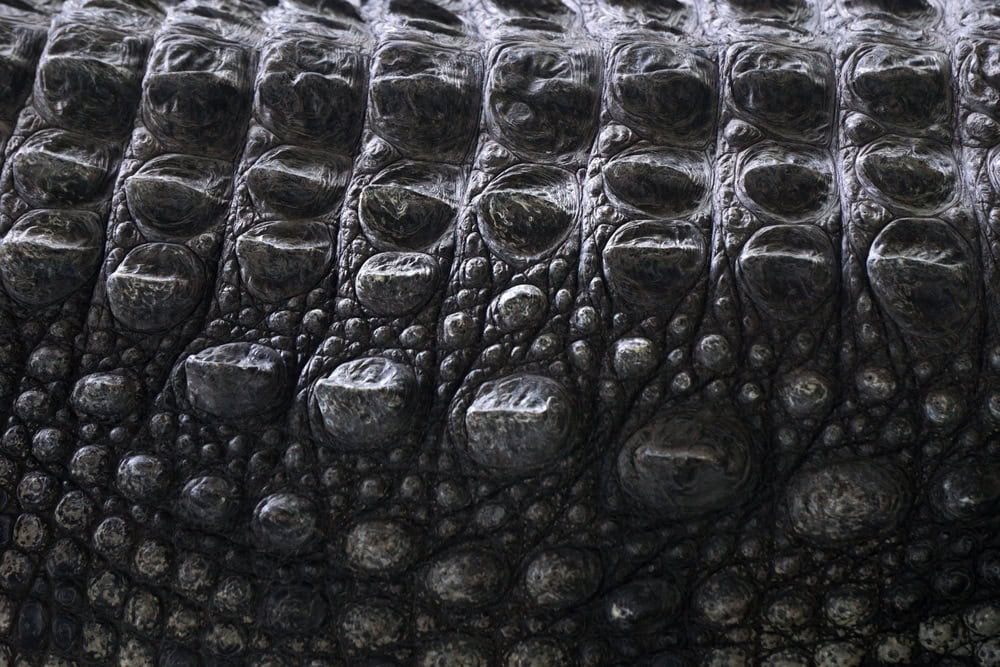
The term “crocodile” derives from the Greek word “krokodilos” (κροκόδιλος), a compound of “krokē” (pebble) and “drilos” (worm), suggesting an association with “pebble worm” or “worm of the stones.” Originally used to describe small lizards, the name “krokodilos” was extended to refer to the much larger reptiles of the Nile. The crocodile’s bumpy, rough skin resembles a rocky texture, reminiscent of pebbles. Additionally, the reference to “worm” could hint at the crocodile’s elongated, serpentine body shape.
4. Crocodiles Are Apex Predators
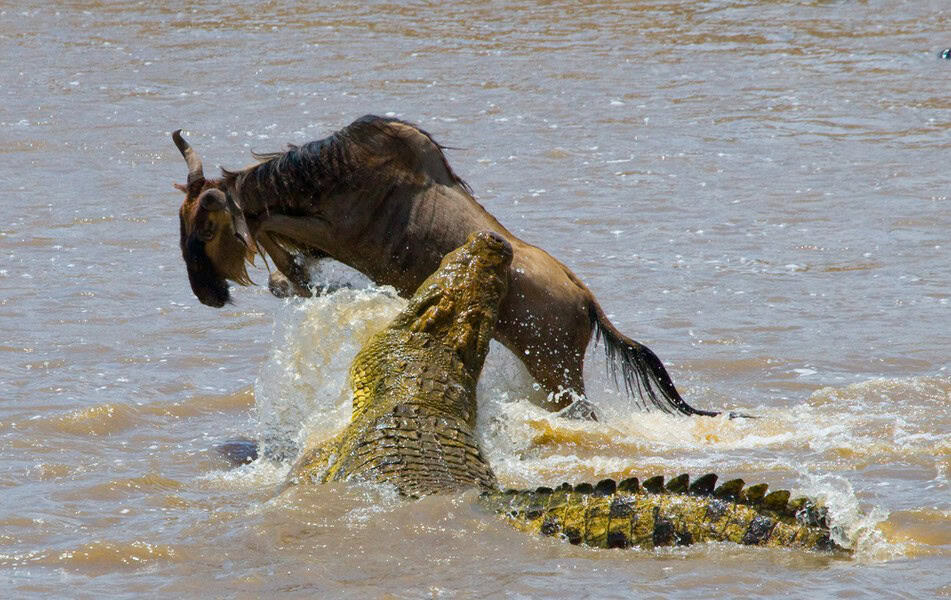
In their role as apex predators, crocodiles have a large impact on the ecosystem. Their predatory behavior prevents overpopulation of certain species, which can lead to imbalances in food resources and habitat degradation. Crocodiles are opportunistic hunters, feeding on a variety of prey depending on their size and available food sources. Their diet primarily includes fish, birds, mammals, amphibians, and carrion. During the migration, nile crocodiles present a threat to the wildebeest and zebra herds that cross the Grumeti River in Tanzania and the Mara River in Kenya.
5. Crocs Are Built for Stealth and Power
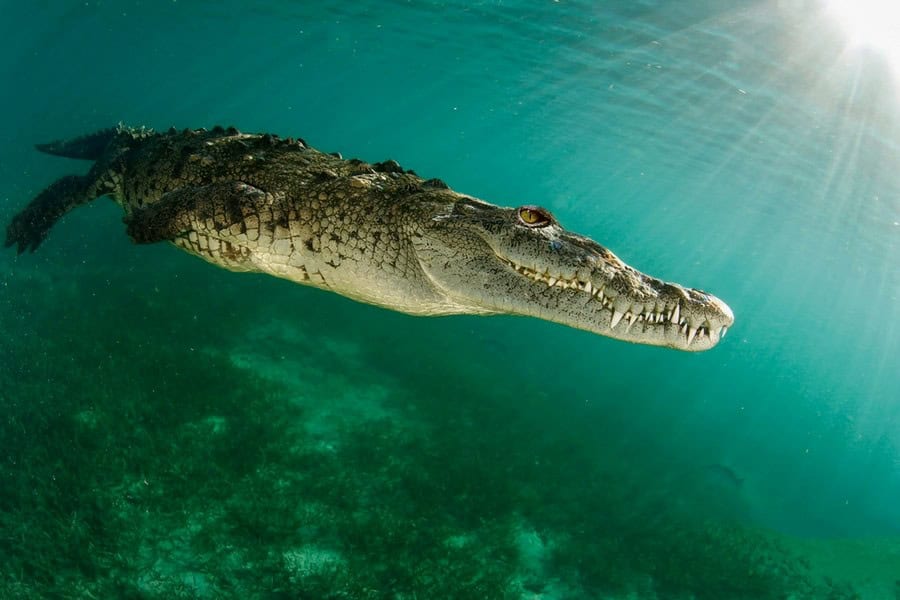
Even with their heavy, armored bodies, crocodiles are incredibly fast and agile in the water. They can reach speeds of up to 15 to 18 miles per hour (24 to 29 kilometers per hour) in short bursts while in the water. On land, though less nimble, they are able to run up to 11 miles per hour (17 kilometers per hour) over short distances. This makes them effective ambush predators, capable of launching sudden attacks from the water’s edge. Crocodiles possess one of the strongest bite forces in the animal kingdom at 5,000 pounds of pressure per square inch. Their powerful jaws, filled with 60-110 teeth, are capable of crushing bones and turtle shells, which no other animal can manage with such ease.
6. Their Signature Move is the Death Roll
The “death roll” is a lethal maneuver employed by crocodiles when capturing and subduing their prey. The crocodile bites down on its prey with its powerful jaws and then rapidly spins its body in the water suing their exceptionally strong tail muscles. The death roll disorientates the prey, drags them under the water, and tears limbs from the body for easier consumption. The maneuver is particularly effective when dealing with large or tenacious prey that cannot be easily subdued by bite force alone.
7. Crocodiles Need to Sun Bathe
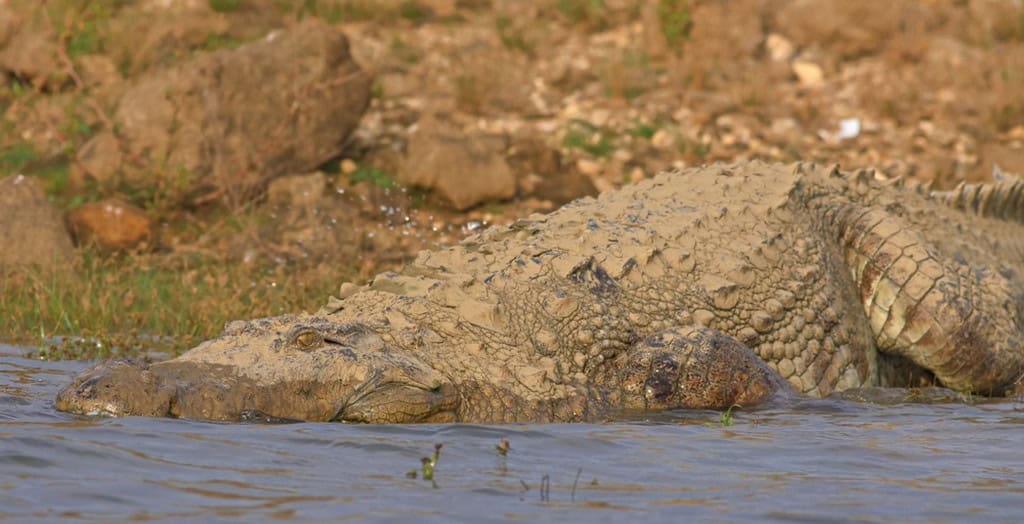
Crocodiles sunbathe, known as basking, primarily to regulate their body temperature. Being ectothermic (or cold-blooded) animals, crocodiles rely on external sources of heat to manage their body functions. During warmer periods, crocodiles might spend less time basking as their body temperature can be maintained more easily. Conversely, in cooler conditions, they may bask more frequently to absorb sufficient warmth from the environment. The frequency and duration of their basking also depend on their activities and energy requirements. For instance, after consuming a large meal, crocodiles may bask longer to aid in digestion.
8. Crocodiles Survive Droughts By Digging Burrows
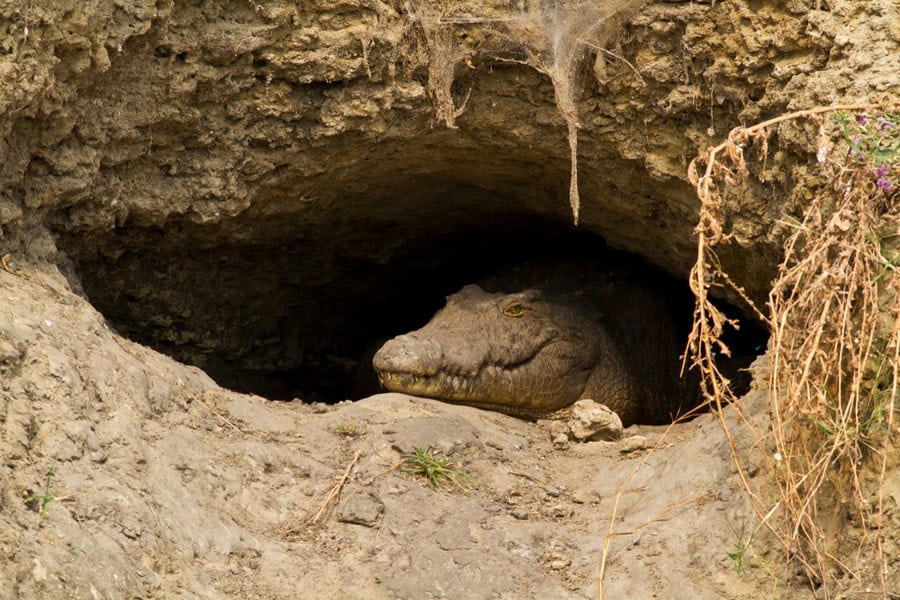
Crocodiles are well-adapted to their aquatic environments but are also equipped to handle periods of drought and low water levels. During these times, crocodiles can dig estivation pits or burrows. These are dug into riverbeds and mudbanks, where they can access cooler, moist substrates to reduce their body’s water loss. This behavior is a form of estivation, similar to hibernation but for hot and dry conditions. In these burrows, crocodiles slow down their metabolism, which reduces their need for food and water.
9. They Can Live Without Food for Months
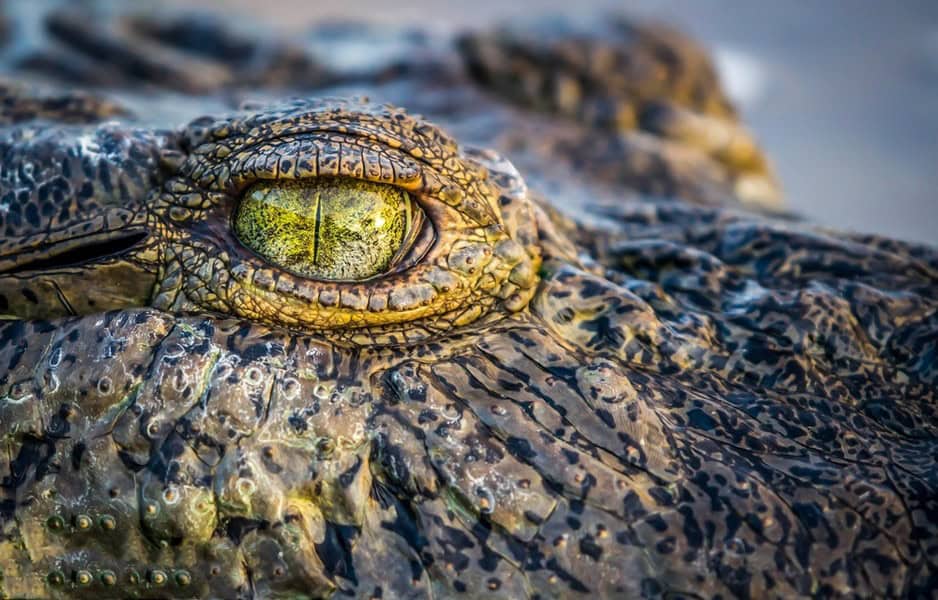
Crocodiles can survive for several months without food due to their efficient metabolism and the ability to slow down their physiological processes when food is scarce. Their metabolism slows when they are not actively warming themselves or when they are in cooler environments. This reduces their need for frequent feeding. Additionally, crocodiles can store fat in their tails and other parts of their bodies, which they can metabolize during periods of food scarcity. Moreover, crocodiles are capable of reducing their heart rate and other bodily functions during extended periods without food, further conserving energy. Larger crocodiles can go for over a year without eating a meal.
10. Crocodiles Kill 1,000 Humans Per Year
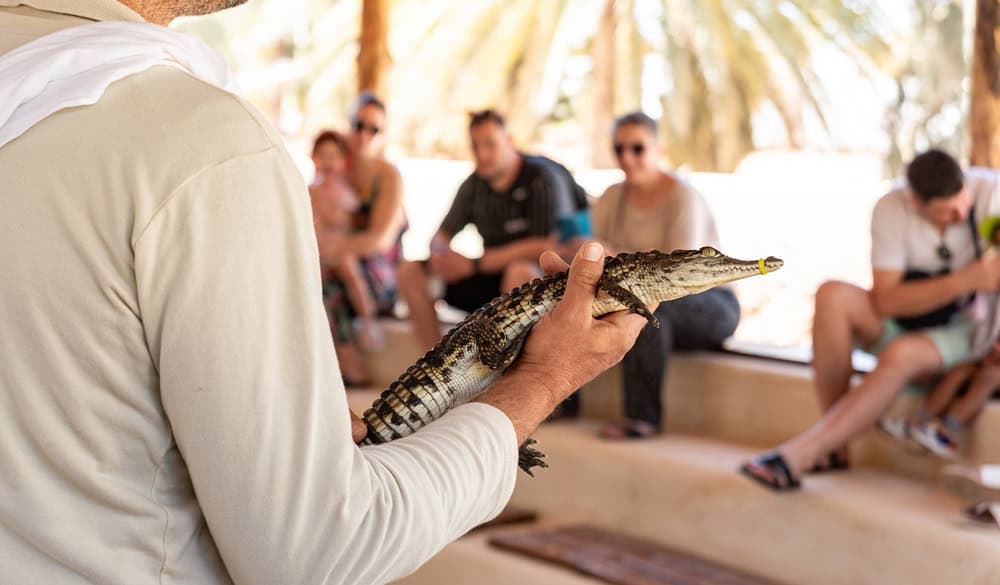
Crocodile attacks on humans are a serious concern in areas where large crocodilians are native and human populations live nearby. The number of people killed by crocodiles each year varies, but it is estimated that crocodiles kill about 1,000 humans per year. The Nile crocodile and the saltwater crocodile are responsible for the majority of these fatal encounters due to their size, power, and aggressive nature. These incidents often occur near the water’s edge where crocodiles are most active and people come to wash, fish, or collect water.
—–
Nile Crocodile Quick Facts:
- Scientific Name: Crocodylus niloticus
- Common Name: Nile crocodile
- Size: Can reach up to 16-20 feet (4.9-6.1 meters) in length
- Weight: Typically ranges from 500 to 1,400 pounds (227-635 kilograms)
- Lifespan: 70-100 years in the wild
- Diet: Carnivore; feeds on fish, birds, mammals, and occasionally smaller crocodiles
- Habitat: Freshwater environments like rivers, lakes, and marshlands across sub-Saharan Africa
- Conservation Status: Least Concern
See crocodiles in real life on a private Tanzanian safari.





























































